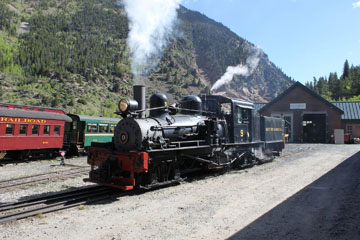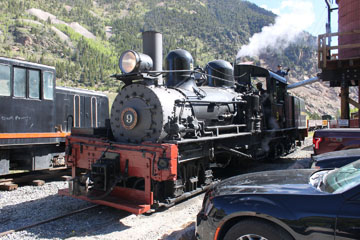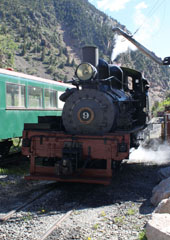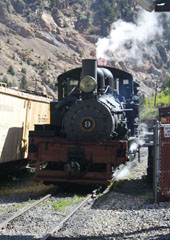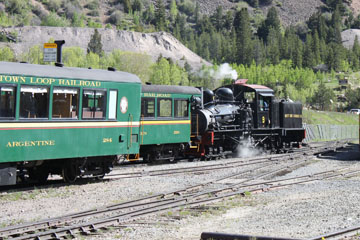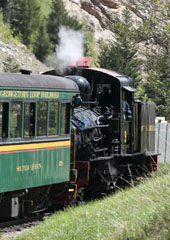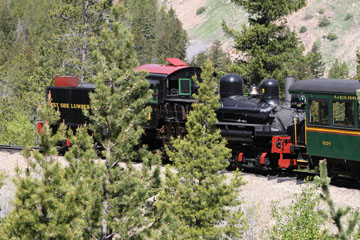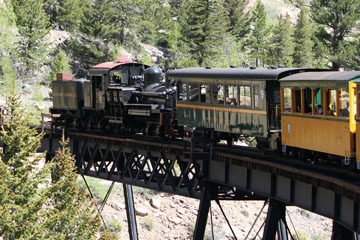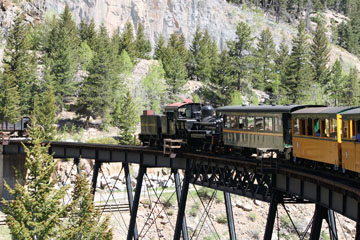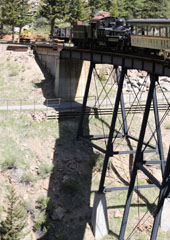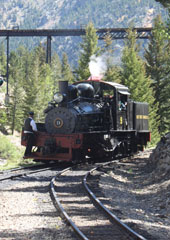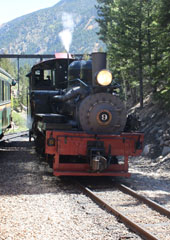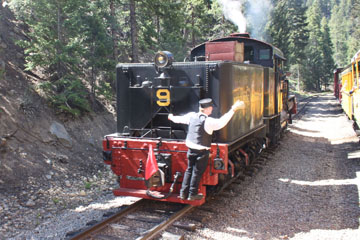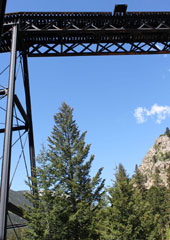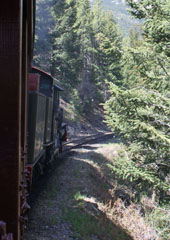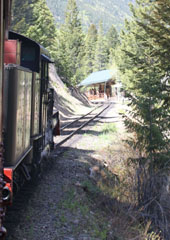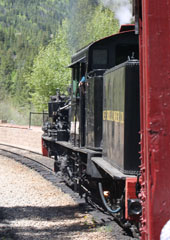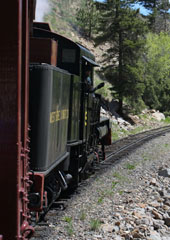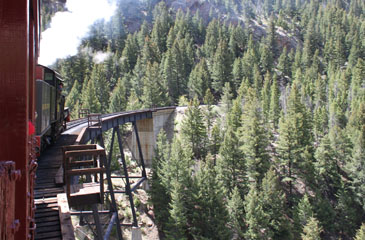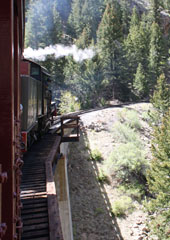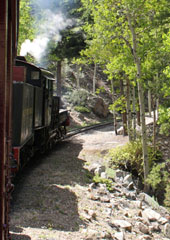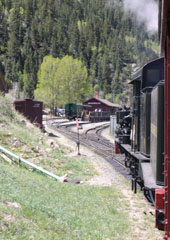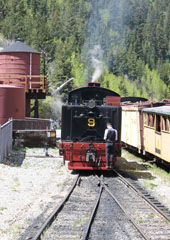

The Georgetown Loop Railroad is a narrow gauge (36") heritage railroad located in the Rocky Mountains in Clear Creek County, CO. It operates summer tourist excursions between Georgetown and Silver Plume, CO, a distance of 2 miles as the crow flies but covering 4.5 travelling miles and climbing 640' through the mountainous terrain. With a ruling grade of 3%, the line from Georgetown to Silver Plume includes three hairpin turns, four bridges and a 30º horseshoe curve.
The Georgetown, Breckenridge & Leadville Railroad was formed in 1881 under the Union Pacific Railroad to build a line from the Colorado Central Railroad in Georgetown to Breckenridge and Leadville. The stretch from Georgetown to Silver Plume was completed in 1884.
Considered an engineering marvel for its time, it was one of Colorado’s first visitor attractions. Seven trains a day ran from Denver at the height of its popularity, at $3 for a round trip. In 1879, Georgetown was briefly dubbed the "Silver Queen of Colorado" following news of large silver strikes across the region.
During the early 1900s, advent of the automobile dramatically reduced excursion revenues for the railroad. The Georgetown Loop ran only two
trains a day from May through September. In
1938, the last train ran from Denver to Silver Plume, the line from Idaho Springs to Silver Plume was abandoned and the Georgetown Loop dismantled.
During the late 1950s and 1960s, centennial celebration of the discovery of gold in
Georgetown prompted interest in resurrecting the loop.
Above, #9 stands outside the Engine House waiting to connect to the day’s consist. #9 is a 3-truck Shay type locomotive built by the Lima Locomotive Works in Lima, OH, in 1923. At 140,000 lbs, it is one of the three largest narrow gauge Shays ever built. You can see the other largest surviving Shay on the Cass Scenic Railroad page of this website.
With three 12” x 15” vertically mounted cylinders, the superheated engine operated at a boiler pressure of 200 psi delivering 36,150 lbs tractive effort.
Above, Devil’s Gate station includes a ticket office and gift shop and is where the trip starts for Silver Plume.
In 1973, reconstruction of the rail line began
after the Union Pacific donated the track and
ties. Rolling stock was gathered and bridges
were set in place. Two years later, the first operating season of the new Georgetown Loop began on a small portion of completed track. Reconstruction work continued through the Late 1970s and early 1980s. Devil’s Gate bridge was reopened in 1984 completing the entire Georgetown Loop line. Devil’s Gate station was dedicated in 1985. The following year, the Engine House was completed.
Above, #9 moving to couple to today’s consist.
#9 worked for the West Side Lumber Co., out of Tuolumne, CA, until the early 1960s. The West
Side lasted until the early 1960s, and was the last steam-powered narrow gauge logging railroad in the United States.In 1966, it was sold to the Midwest Old Settlers & Threshers Association to operate on its tourist line out of Mount Pleasant, IA, as Midwest Central Railroad #9. In 2011, it was leased to the Georgetown Loop Railroad on a seven year agreement in exchange for GLR 2-6-2 #12.




